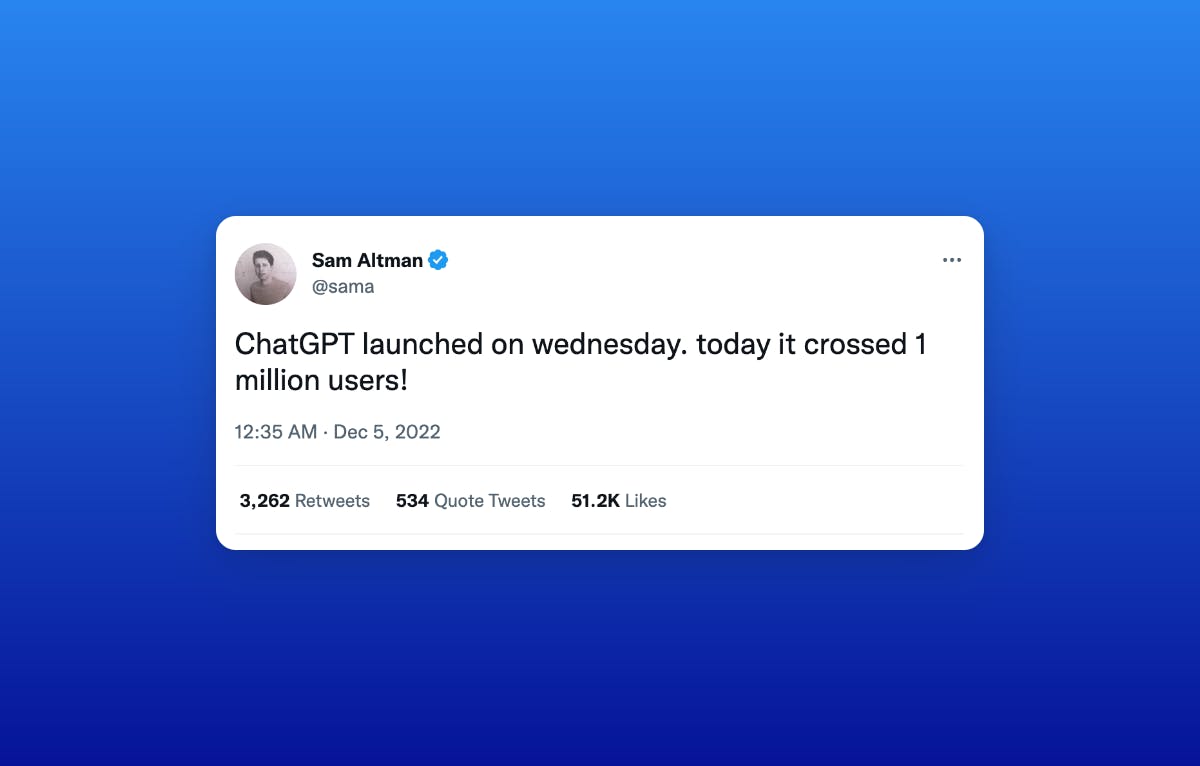Subscribe
Sign in
Why ChatGPT is blowing up the web

Share On
ChatGPT is much better at long-form than GPT-3. Why and what does it mean?
“[L]anguage interfaces are going to be a big deal, I think,” tweeted Sam Altman when he launched ChatGPT. No kidding.
ChatGPT nearly instantly started blowing up the internet with people sharing examples of the chat assistant in action. Prompts range from asking the bot to re-write song lyrics and biblical-style verses about off-beat topics to de-bugging code and testing its responses to an MBA exam (ChatGPT received an "A").
Of course, we had some fun with it too.

So, how is ChatGPT different? If you’ve tried GPT-3 before and have found its limitations problematic for real-life use, we don’t blame you. However, ChatGPT is in fact an upgraded model worth looking at. It's powered by GPT-3.5. Like its predecessor, the new model trained on tons of internet content, but GPT-3.5 can handle more complex instructions and produce better long-form writing. It's also better at rhymes for things like poems and lyrics. And it's less likely to generate harmful or biased text, though OpenAI still lists such problematic issues as an “occasional” limitation.
What does this mean? As Altman said in his tweets, “this is something that sci-fi really got right.” ChatGPT gives us the most practical application we've seen yet for using AI in our conversations with customer support, assistants, and more. Or to having AI write our homework, blog articles, grant proposals, (fill in the blank). Some experts even speculate that we may be a few years away from this technology replacing search engines like Google (not everyone agrees).
What’s next? GPT-4 (or whatever it may be called) is coming. OpenAI is expected to release the newest model sometime in the near future, potentially in 2023.
Altman said ChatGPT is “an early demo of what's possible… it's very much a research release.” In the meantime, you can bet we’ll be rewriting more song lyrics from the perspective of cats... and other important stuff.
This article was first seen in Product Hunt's Daily Digest newsletter. Join over half a million other subscribers in being the first to read about the newest, trending products.
Comments (19)
Mikko Seppä@deleted-1093716
It's going to be interesting to see which industries are going to be affected by this.
Earlier people thought it'd would be only for number crunching etc, but the more I use copy.ai etc I believe that this will change marketing for good.
Just based on my own experiences, ChatGPT is very capable already.
Share
Trying to give a little bit of the highly needed contrast to the hype:
https://www.theverge.com/2022/12...
https://www.technologyreview.com...
It's amazing, it can even write code snippets and whole articles! Although the code is not perfect, it is as good as a Junior dev!
I am also very interested and amazed to see this product's growth, but still, there are a lot of improvement areas that can make this tool one of the best content marketing tools.

ChatSonic - ChatGPT Chrome Extension
Adding a tool my team built on top of ChatGPT with some extra superpowers, Chatsonic - https://www.producthunt.com/post...
ChatGPT is a game-changer!!!
More stories

Mathew Hardy · How To · 3 min read
How to Detect AI Content with Keystroke Tracking

Sanjana Friedman · Opinions · 9 min read
The Case for Supabase

Vaibhav Gupta · Opinions · 10 min read
3.5 Years, 12 Hard Pivots, Still Not Dead
Kyle Corbitt · How To · 5 min read
A Founder’s Guide to AI Fine-Tuning

Chris Bakke · How To · 6 min read
A Better Way to Get Your First 10 B2B Customers
